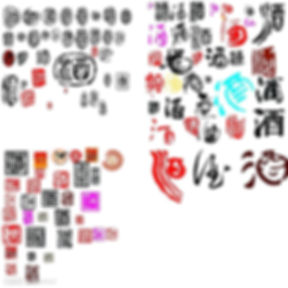Conjecturing Wine
I met Fabian Swartz last year today when I was travelling and tasting in Italy. We never did any tasting together: what we did was a little bus (open topped) ride around Rome. And we just talk and laughed. Then I realized I knew a lot about his wines, without tasting.
My thesis was: wines can be conjectured; wines may not have to be tasted; tasting techniques are useful up to a point.
Fabian graduated from the prestigious San Michele all’Adige Institute. He and the Schwarz family is from the Alto Adige; they purchased La Magia in 1979. The estate, which is situated below the extinct volcano of Monte Amiata and directly above the romanesque abbey of Sant’Antimo, enjoys one of the most magnificent views within the Val d’Orcia.
On the open deck, a clean wine was still blowing. I asked who really was the hero for him in the Italian industry? Fabian said, ‘DE VESCOVI ULZBACH (Trentino Alto Adige)is one of them. The owner Giulio was at school with me, and started to make quality red wine in a white wine region. Now he is making the best Teroldego Rotaliano.’ Umm , quite a guy upholding to the indigenous grapes. That is a road less travelled, which is not an easy one. I suddenly recalled one of my favourite poem “The Road Not Taken’ by Robert Frost:
“……..Two roads diverged in a wood, and I, I took the one less traveled by, And that has made all the difference”
Who are your idols? Fabian said, ‘I'm a winemaker by myself. It's difficult to find very professional consulting winemakers in Italy. Aftermy college I had some idols but more and more I found my way and Ithink the best winemakers are the ones who are working in a place where they know exactly what they can obtain from the terroir wherethey can risk.’ Fabian should be then re-echoing his relish for traditional Tuscan style of wines,that really made me inquisitive now about how traditional his wines are.
Which Brunello di Montalcino were your rival or at least your want to learn from? ‘I've a lot of rispect of Brunello di Montalcino like Biondi Santi, Poggio di Sotto, Salvioni, Soldera. But the Brunello di Montalcinothat in this moment i like are Uccelliera, Poggio Antico, and Pacenti, responded Fabian. My interpretation was that Fabian relished the Toscan traditionalist on the one hand but he turned to the riper, softer styles in this moment. He was turning from the classic designers to the younger, bolder new wavers. Is he one now?
Who were your favourites outside Italy?’ In Italy the withe wines of Alto Adige, Outside the red wines of South France, the Pinot Noir of burgundy, the wines of Achaval Ferrer in Argentina’ says Fabian. It would seem to me that Fabian Schwarz should be very liberal and with a sense going beyond Italy and internationalism. He quoted Achaval Ferrewhich is also my favourite, in terms of spirit.
Any views on vintage 2007? So what sets 2007 apart? 'The 2007 vintage of Brunello di Montalcino is a lovely expression of variety and territory—a true celebration of this austere yet sophisticated red wine from southern Tuscany. The strong cola or menthol-like notes of licorice, dried ginger, cured meat and white pepper, or as the Italians refer to these characteristics, note balsamiche. These delicate and compelling aromas are unique to Sangiovese. It’s a pleasure to find such harmony and consistency in a single vintage'.
Which one, 2006 or 2007, would you prefer really? “Between the two vintages, I prefer 2007. We had a very dry summer, without much rain, and temperatures that were warm but not exceedingly so. These conditions created these beautiful balsamiche aromas that are so evident in 2007.”The 2006 vintage was characterized by higher acidity and long aging potential. But overall, the wines are sharper, linear and more austere. On the other hand, the 2007 vintage is softer, rounder and more opulent, and shows incredible aromatic intensity. It also delivers firm structure and power for long cellar aging. Sangiovese Grosso is a naturally acidic variety, with freshness that's very well balanced in 2007.
Rome, my last stop back home, ended with conjections before I jumped off for my flight.
A couple of months ago, I received a bottle of La Magia 2007 Brunello di Montalcino Normale. My notes went, ‘A brooding, masculine wine with tobacco smoke and cigar box. New world in stance at the risk of pigeonholing. At the back are tones of dried fruit, blackberry preserves, crème de cassis and prune. Quite some new world elements as well. Wonderful intensity and elegance with loads of personality. Spice, black pepper and bitter chocolate. Firm and determined on the finish. Good aging potential.’ Deep down, there is the air of Tuscan.
Coming with the bottle are the copies of the certificates.
4 bunch of grape in Duemilavini review for Brunello 2007, 2006, 2005, 2004, 2003, 2002, 2001, 2000 and 1999.
3 gold stars in Veronelli guide for Brunello 2005 and 3 stars for Brunello 2007, 2006, 2004, 2003, 2002, 2001, 2000.
It also read WE94. Well-not that bad! At least some recognition to a young, humble artisan maker from the classic school!
Yes, quite right . We study learn not for scores. But this one happened to have good scores and good style.
Conjecture gives more room for thoughts, more accommodation ofr freedom of thinking. Genuine tasting asked for the ability to classify to pass on the knowledge. To help classifcation commerically can we do away with scores and accolades of achievements in form of papers!






















